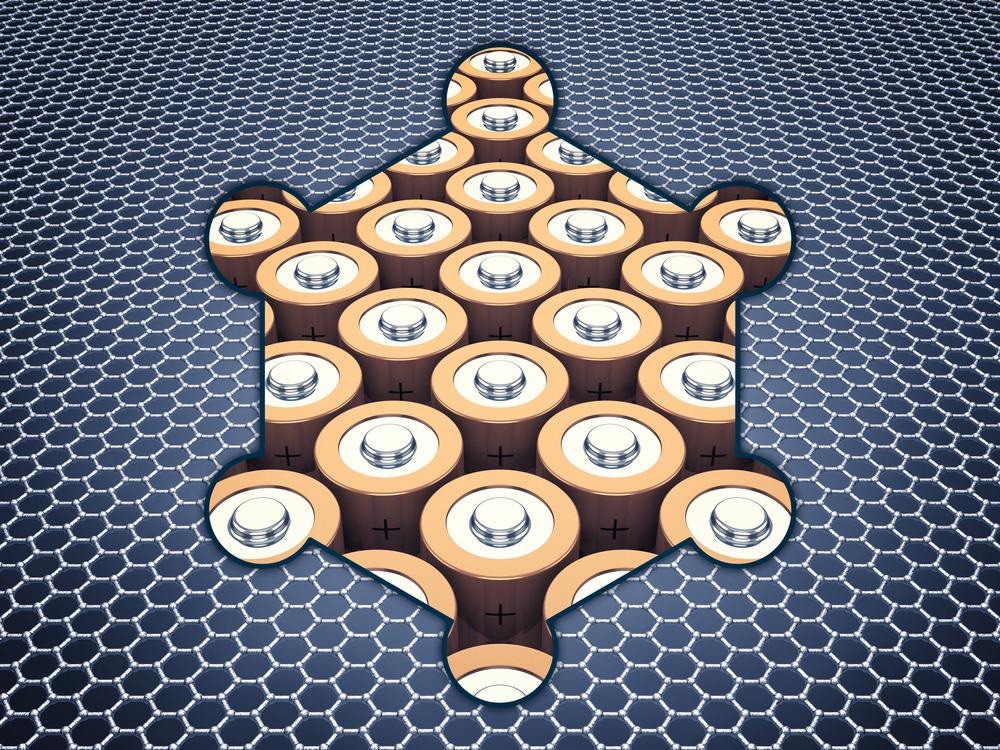A new paper in the journal Energy Storage Materials has demonstrated a novel and simple method for optimizing the properties of supercapacitors using stacked carbon films with different pore features. The research has been conducted by scientists from the University of Science and Technology of China, with the paper currently in the pre-proof stage of publication.

Study: Heterogeneous stacking carbon films for optimized supercapacitor performance. Image Credit: nobeastsofierce/Shutterstock.com
Background to the Research
Supercapacitors have recently demonstrated significant promise for electrifying and decarbonizing several important industries. They possess enhanced power density, fast charge and discharge rates, enhanced safety compared to other devices, and a long lifespan.
Electric double-layer capacitors (EDLCs) are a current focus of research, with carbon-based materials have been widely explored for use as electrodes. Whilst they have shown significant benefits for the design of these next-generation energy storage devices, they are unfortunately limited by challenges with tuning their porosity. Moreover, the low ionic dynamics of these materials is a current bottleneck in research, hindering the development of high-mass-loading electrodes for supercapacitors.
Research has revealed that the capacitance of carbon-based electrodes is governed by small pores close to the size of ions, via the process of absorption and desorption. Larger pores function as ionic buffers, aiding in ionic transport. Studies have attempted to improve the capacitance of these materials by tuning pore volume and enhancing their surface area, employing various activation strategies.
Despite the potential benefits of optimizing carbon-based electrode materials, increasing specific surface area and enlarging pore volume can lower the electrode’s mass density. A major drawback associated with this is the loss of areal and volumetric capacitance. This can severely limit device performance.
Several studies have been performed in recent years to investigate the influence of the carbon material's heterogenous structure on the properties and performance of electrodes for supercapacitors. Structure asymmetry, surface charge polarity, and chemical composition have been revealed to enhance the efficiency of ionic transport. Tuning the heterogenous structure of these materials could confer significant benefits for device design.
The Study
Three carbon-based materials have drawn the attention of the authors behind the new paper, reduced graphene oxide, a variant of activated carbon termed YP50F, and activated microwave exfoliated graphene oxide (aMEGO.) YP50F is commonly used in supercapacitors due to its good conductivity and low cost. Reduced graphene oxide, a 2D material, possesses superior electrical conductivity whilst having a low specific surface area.
Compared to reduced graphene oxide, aMEGO has a much higher specific surface area. This material is prepared by using KOH activation to restructure graphene platelets. The authors have stated that a combination of these three materials, each with different structural and pore characteristics, could provide a route to rational heterogenous stacking electrode design. This would create the opportunity to enhance their performance, especially for electrodes which must deal with high mass loads.
The authors discovered that constructing thicker electrodes out of these three carbon-based materials influenced their charge storage performance. The stacking order of the materials influences this performance in the prepared thick electrodes. A key finding of the study is that reduced graphene oxide acts as an ion transport channel, whilst aMEGO acts as an ion storage medium.
The optimal stacking order was discovered to be YP50F/rGO/aMEGO. Electrochemical performance was optimized by the high specific surface of aMEGO which supplied sufficient levels of ions for efficient transport by the reduced graphene oxide layers.
Placing the reduced graphene oxide layer in the middle of the electrode avoided ion accumulation at interfaces and the concentration reaches relatively high levels after one second of charging. In contrast, using reduced graphene oxide as an outer layer and exposing it to the electrolyte leads to significantly reduced ion transport due to ion aggregation. Therefore, the electrode structure demonstrated in the research presents the optimal solution.
Performance Results of the Novel Electrode
The prepared thick electrode composed of layers of the three materials achieved superior performance compared to conventional carbon-based electrodes, demonstrating its suitability for use in next-generation supercapacitor devices. The thickness of the prepared electrode was 210 μm.
Gravimetric capacitance reached 171.4 F g-1. Volumetric capacitance, which is limited in conventional electrodes, reached 102.8 F cm -3. Areal capacitance, which, again, is limited by tuning pore volume, reached 2.2 F cm-2. A 1 M EM1BF4/AN electrolyte was used to evaluate the performance of the layered electrode at a voltage of 2.7 V.
In Summary
The paper has demonstrated the simple fabrication of a thick electrode using layers of different carbon materials in an optimized configuration with enhanced ion transport capabilities. This research will have implications for the design of high-performance next-generation supercapacitors.
More from AZoM: What Do We Know About Thin Film Solar Cells?
Further Reading
Su, X et al. (2022) Heterogeneous stacking carbon films for optimized supercapacitor performance Energy Storage Materials [online, pre-proof] sciencedirect.com. Available at: https://www.sciencedirect.com/science/article/abs/pii/S2405829722002628
Disclaimer: The views expressed here are those of the author expressed in their private capacity and do not necessarily represent the views of AZoM.com Limited T/A AZoNetwork the owner and operator of this website. This disclaimer forms part of the Terms and conditions of use of this website.